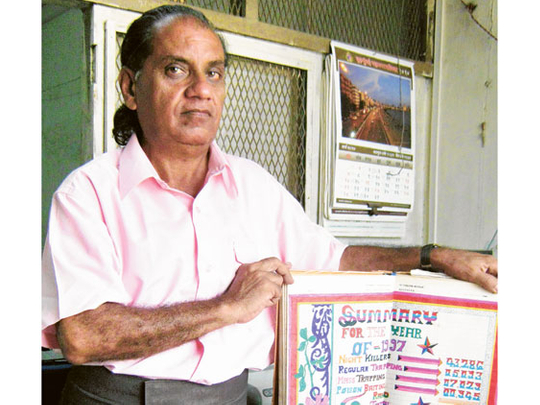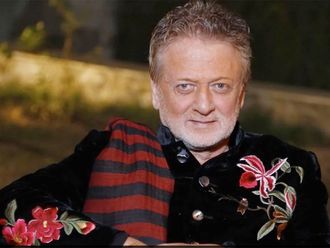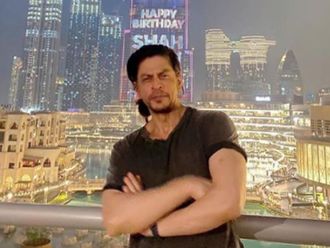
Miriam Chandy Menacherry seeks little-known stories that miss the reader's eye. This quest has taken her to Al Shahaniya in Qatar, where Bedouin tribesmen gear up camels for races; to the forests of Jharkhand notorious for naxalite ambushes; and through the streets of Mumbai while accompanying rat killers on their nocturnal mission.
Her desert venture resulted in the production of a documentary film on robot jockeys that replaced child jockeys in camel races, and the Jharkhand experience showcased a village deprived of electricity and its endeavour to use bio-diesel power.
With her recent documentary, The Rat Race, Miriam brings alive on screen the job of Mumbai Corporation's workers who toil through the night to eradicate the city of its rodent population.
This story impressed an international jury at Cannes and emerged winner of the MIPDOC co-production challenge in 2010. MIPDOC is a prominent international market and annual event for documentary film screenings around the world.
Miriam, a postgraduate from AJK Mass Communication Research Centre, New Delhi, worked for two years as a CNBC correspondent before donning the director's hat. Her film, The Stuntmen of Bollywood, was nominated for the most innovative film at the Showreal Asia awards in 2005 and her series, Back to the Floor, won the Indian Television award for Best Business Series in 2004. Robot Jockey captured the union of tradition with technology in Qatar, where for the first time in 2005, robots were holding the reins of camels. Operators controlled these radio jockeys remotely. This film made for the National Geographic Channel won the Asian Television Award for Best Social Awareness Programme.
A Light Burns, winner of the UK Environment Film Fellowship, 2007, panned a village in Jharkhand's forests to document a community's effort to produce bio-diesel from locally grown oil seeds.
What sparked The Rat Race was a news clipping of about 2,000 people applying for the post of 30 rat killers hired by Mumbai Corporation.
"I found that intriguing," Miriam said. Delving deeper she found out that these applicants also included graduates and postgraduates. "The pay was good. They receive Rs11,000 [Dh752] per month for a daily quota of killing 30 rats."
Over a year and a half she followed these workers, camera in hand.
"My film is a layered story that explores the city as a space for ambitions of people who come to Mumbai with dreams. It dwells on the journey of these people who see their livelihood in good humour and have a never-say-die spirit," she said.
Armed with a torch and a stick they stalk bandicoots. The monsoons make their work difficult, as do political activists who interfere during Ganesh Chathurthi (when the deity is worshipped and is depicted riding a mooshaka or a mouse).
A significant character in the film is Behram Harda, who has killed 2.8 million rats in 37 years.
"Behram in his youth aspired to be a Bollywood dancer but took up this profession, being a government job. He calls himself James Bond with a licence to kill rats. He refused promotion to other departments and feels this is his calling. A scrupulous worker, he has beautifully calligraphed records showing the count of rats killed," the 37-year-old filmmaker said.
"My film highlights the important job these people carry out. While it does not overtly highlight their woes it is all there for the audience to see and empathise."
As for initial hurdles in making the film, Miriam said getting permission from the pest control department was a big hassle. "They had never got a request like this. So they did not know how to process it."
At Cannes, she presented her trailer to a distinguished jury where the film was among six selected for the Cannes co-production challenge. "We had chosen a local subject," Miriam recalled. "The film was shot at night with less lighting, a choice we made so as to not frighten the rats or affect the work of the rat killers. Our images were grainy, unlike the competitors', whose work was glossy and in high definition."
The win helped Miriam get funding from the Jan Vrijman Fund and a world premiere at the International Documentary Festival of Amsterdam. "It felt good to hear that our film was running to packed houses where tickets were sold for €21 [Dh102]."
Championing her film is actor-comedian Jaaved Jaaferi, who has launched the IDF (Indian Documentary Foundation) with the aim of taking documentaries to mainstream audiences.
"We have little to no promotional budget but I am relying on word of mouth. After all, this is a local story that is all too real, has compelling characters and a wicked dark humour. If it could have international audiences giving it a standing ovation I am sure Indian audiences will catch more of the nuances," Jaaferi said.
Any roadblocks because of her gender? "No," said Miriam, who manages the production house Filament Pictures. "Being a woman helps bring out softness to a story and share an equation with my subjects."
Talking about Robot Jockey, where she broke protocol by being the sole woman among the Bedouin, she says, "I was treated like a princess."
On the anvil is a film that Miriam will co-direct with Pakistan director Maheen Zia.
"I am looking forward to working on this," says this mother of a six-year-old.
Mythily Ramachandran is an independent writer based in Chennai, India.













